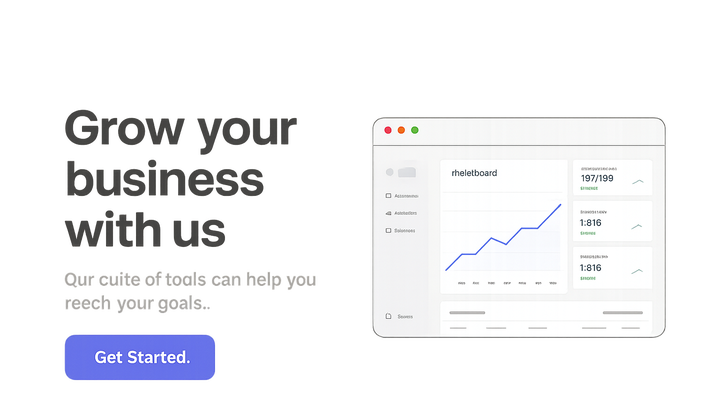Published on 2025-06-29T20:20:24Z
What is a SaaS Hero Section? Examples & Best Practices
A hero section is the topmost area of a SaaS website’s landing page, visible without scrolling. It instantly communicates your core value proposition, sets visual tone, and directs users toward the primary action.
An effective hero section typically includes:
- A clear, benefit-focused headline and supportive subheadline
- A compelling call to action (CTA) button
- A relevant visual (product screenshot, illustration, or video)
- Trust signals (customer logos, testimonials, security badges)
By balancing messaging, design, and accessibility, your hero section can boost conversions, improve SEO signals, and deliver an inclusive user experience.
Saas hero section
The hero section is the topmost area on a SaaS homepage showcasing your value proposition and primary CTA to drive conversions.
Why SaaS Hero Sections Matter
The hero section is the user’s first interaction with your product. Its clarity and appeal shape brand perception, directly influence click-throughs, and support SEO and accessibility best practices.
-
First impressions & brand perception
Users form opinions within seconds. A polished hero section builds trust, signals professionalism, and encourages deeper engagement.
-
Impact on conversion rate
Prominent value statements and CTAs in the hero section can significantly lift sign-ups, demo requests, or trial starts.
-
Seo & accessibility
Well-structured headings, optimized images with alt text, and fast load times improve search rankings and usability for all visitors.
Key Elements of an Effective SaaS Hero Section
A high-impact hero section combines messaging and visuals to guide visitors toward action. These components are essential:
-
Value proposition
A concise statement explaining what your product does and why it matters to your audience.
-
Headline & subheadline
The headline grabs attention; the subheadline elaborates on the main benefit or differentiator.
-
Call to action (cta)
Directs users toward the next step, such as “Start Free Trial” or “Request a Demo.”
- Primary cta:
The most important action, styled for maximum visibility.
- Secondary cta:
A lower-commitment alternative, like “Learn More.”
- Primary cta:
-
Hero image or illustration
Supports your message visually—could be a product interface, custom illustration, or short video.
- Product screenshots:
Actual UI captures that demonstrate core features.
- Custom illustrations:
Brand-aligned graphics that convey emotion or context.
- Product screenshots:
-
Social proof & trust signals
Validates your claims through logos, quotes, or certification badges.
- Customer logos:
Familiar brands that use your solution.
- Testimonials & reviews:
Short, impactful quotes or star ratings.
- Customer logos:
Common Pitfalls to Avoid
Watch out for mistakes that undermine clarity and conversions in your hero section:
-
Cluttered design
Too many elements compete for attention, diluting your main message.
-
Weak value proposition
Generic or vague statements fail to differentiate your SaaS offering.
-
Poor accessibility
Neglecting contrast, keyboard navigation, or alt text excludes users and harms SEO.
- Insufficient color contrast:
Text that blends into the background hampers readability.
- Missing alt text:
Images without alt attributes are invisible to screen readers.
- Insufficient color contrast:
Optimizing with Prevue.me and Other Tools
Leverage specialized platforms to gather insights, run experiments, and continuously improve your hero section:
-
Prevue.me for actionable critiques
Receive prioritized feedback on CRO, UX, SEO, and accessibility to refine your hero section.
- Cro critiques:
Tailored suggestions to boost conversions and lead generation.
- Ux & accessibility feedback:
Identify navigation frictions and accessibility gaps.
- Seo recommendations:
Advice on headings, meta tags, and image optimization.
- Cro critiques:
-
A/b testing platforms
Compare different hero designs and messages to see what resonates most.
- Optimizely:
Enterprise-grade experimentation for web and mobile.
- Vwo:
Intuitive A/B testing paired with heatmaps and session recordings.
- Optimizely:
-
Analytics & heatmap tools
Understand user interactions with data and visual insights.
- Google analytics:
Track user journeys, bounce rates, and goal completions.
- Hotjar:
Visualize clicks, scroll behavior, and collect direct user feedback.
- Google analytics:
